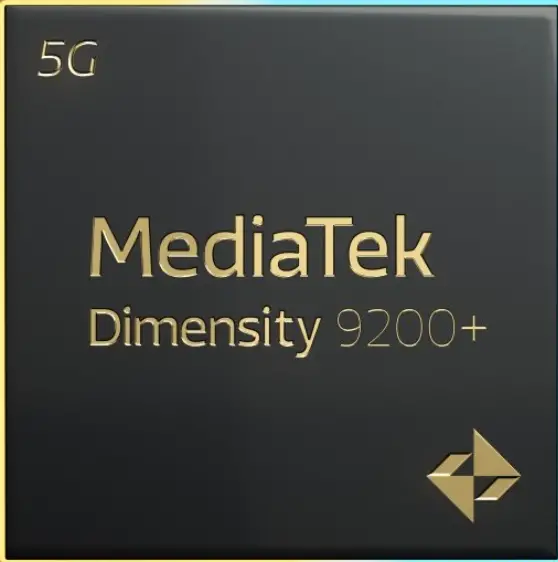Apple A16 Bionic vs MediaTek Dimensity 9200 Plus
We’ve put together a comprehensive comparison of the newly released A16 Bionic chip and Dimensity 9200 Plus SoCs, brought to you by Apple and Mediatek respectively. This analysis breaks down the pros and cons of these 6-core and 8-core CPUs, evaluated through their Geekbench, Antutu, and 3DMark scores, along with their technical details.
Review
CPU Performance
Evaluation of Single-Core and
Multi-Core Processor Performance
Gaming Performance
Gaming and OpenCL/Vulkan
Performance of the Graphics Processing Unit (GPU)
Battery life
Energy Efficiency in Battery Usage
Tech Insist Score
Overall Performance Rating of the
Chip
Key Differences
Pros of A16 Bionic chip
- A16 Bionic chip has 3.28% higher CPU clock speed than Dimensity 9200 Plus (3460 vs 3350 MHz).
Pros of Dimensity 9200 Plus
- Dimensity 9200 Plus has 33.33 % higher memory frequency than A16 Bionic chip ( 8533 vs 6400 MHz).
- Dimensity 9200 Plus has 41.27 % better AnTuTu 9 score than A16 Bionic chip ( 1363 K vs 965 K).
- Dimensity 9200 Plus Support 33.40 % higher memory bandwidth than A16 Bionic chip ( 68.3 vs 51.2 GB/s).
Benchmarks
Evaluating performance through competitive testing in leading benchmarks.AnTuTu 10
| CPU | 247110 | 290704 |
| GPU | 408357 | 600560 |
| Memory | 162944 | 254170 |
| UX | 146541 | 217772 |
| Total score | 964952 | 1363206 |
GeekBench 6
Single-Core Score
Multi-Core Score
3DMark
3DMark Wild Life Performance
| Stability | 79% | 61% |
| Graphics test | 59 FPS | 75 FPS |
| Score | 9862 | 12660 |
Specifications
Full list of technical specifications of A16 Bionic chip and Dimensity 9300CPU
| Architecture | 2x 3.46 GHz – Everest 4x 2.02 GHz – Sawtooth |
1x 3.35 GHz – Cortex-X3 3x 3 GHz – Cortex-A715 4x 2 GHz – Cortex-A510 |
| Cores | 6 | 8 |
| Base Frequency | 2020MHz | 2000MHz |
| Turbo Frequency | 3460MHz | 3350MHz |
| Instruction set | ARMv9-A | ARMv9-A |
| L2 cache | 256 KB | - |
| L2 cache | 16 MB | 1 MB |
| L3 cache | - | 8 MB |
| Process | 4 nanometers | 4 nanometers |
| Transistor count | 16 billion | 17 billion |
| TDP (Sustained Power Limit) | 8 W | 8 W |
Graphics
| GPU name | Apple A16 GPU | Immortalis-G715 MC11 |
| Architecture | Apple GPU | Valhall 4 |
| GPU frequency | 1398 MHz | - |
| Pipelines | 6 | 11 |
| Shading units | 768 | - |
| Total shaders | 1536 | - |
| FLOPS | - | 4736 Gigaflops |
| Vulkan version | - | 1.3 |
| OpenCL version | - | 2.0 |
| DirectX version | - | 12 |
AI Accelerator
| Neural processor (NPU) | Neural Engine | MediaTek APU 690 |
Memory
| Memory type | LPDDR5 | LPDDR5X |
| Memory frequency | 6400 MHz | 8533 MHz |
| Bus | - | - |
| Max bandwidth | 51.2 Gbit/s | 68.3 Gbit/s |
| Max size | 8 GB | 24 GB |
Multimedia (ISP)
| Storage type | NVMe | UFS 3.1, UFS 4.0 |
| Max display resolution | 2796 x 1290 | 2960 x 1440 |
| Max camera resolution | 1x 48MP | 1x 320MP |
| Video capture | 4K at 60FPS | 8K at 30FPS, 4K at 60FPS |
| Video playback | 4K at 60FPS | 8K at 30FPS, 4K at 60FPS |
| Video codecs | H.264, H.265, VP8, VP9, Motion JPEG | H.264, H.265, AV1, VP9 |
| Audio codecs | AAC, AIFF, CAF, MP3, MP4, WAV, AC-3, E-AC-3, AAX, AAX+ | AAC LC, MP3, HE-AACv1, HE-AACv2, FLAC |
Connectivity
| Modem | - | MediaTek T800 |
| 4G support | LTE Cat. 24 | LTE Cat. 24 |
| 5G support | Yes | Yes |
| Download speed 5G | Up to 7500 Mbps | Up to 7900 Mbps |
| Download speed 4G | - | - |
| Upload speed 5G | Up to 3500 Mbps | Up to 4200 Mbps |
| Upload speed 4G | - | - |
| Wi-Fi | 6 | 7 |
| Bluetooth | 5.3 | 5.3 |
| Navigation | GPS, GLONASS, Beidou, Galileo, QZSS | GPS, GLONASS, Beidou, Galileo, QZSS, NAVIC |
Info
| Announced | September 2022 | May 2023 |
| Class | Flagship | Flagship |
| Model number | APL1W10 | MT6985 |
| Official page | A16 Bionic chip official site | Dimensity 9200 Plus official site |

